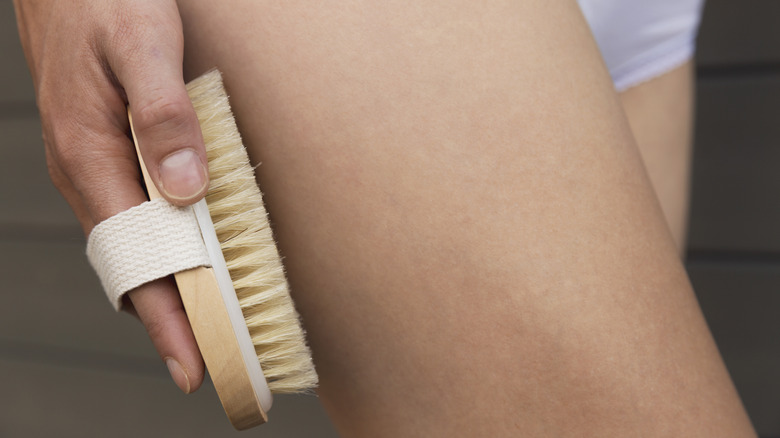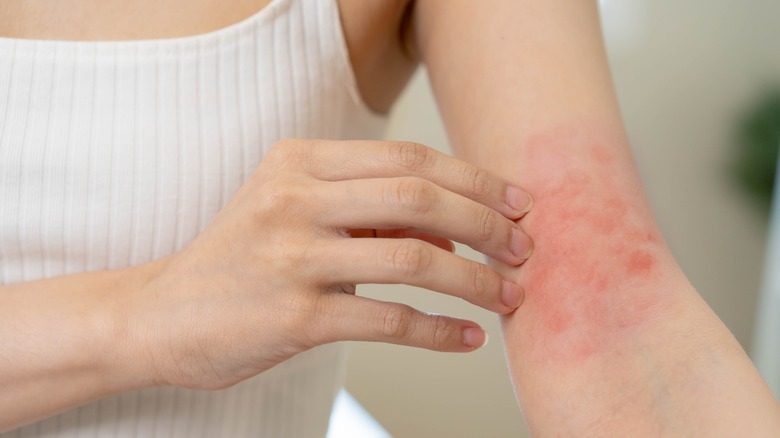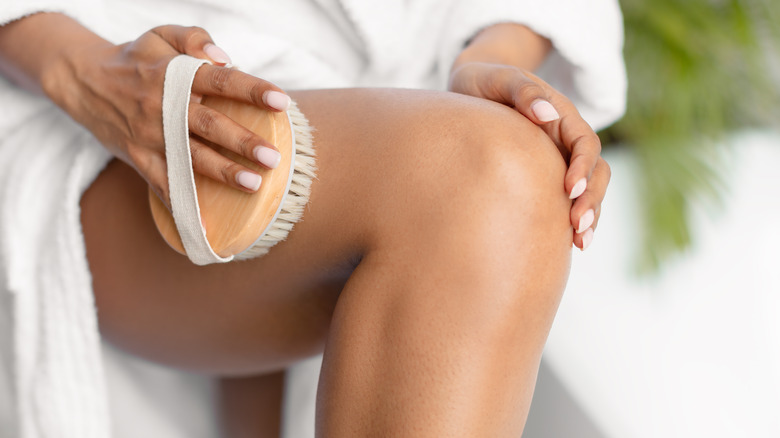What's The Deal With Dry Brushing & Should It Be In Your Self-Care Routine?
There are some practices that seem like they really shouldn't work, and one of those is the process of dry-brushing. You may have seen it pop up on your TikTok or Instagram pages, and we wouldn't blame you if you're confused about exactly why this method is so popular. For the uninitiated, dry brushing is an Ayurvedic practice that involves manually brushing your skin with a non-wet brush.
It may not sound like the most appealing exfoliation method, especially when you consider other physical exfoliants that have gotten a bad rep. However, some dermatologists have a surprising verdict as to whether or not it should be encouraged in practice. As it turns out, dry brushing can actually be an incredibly helpful process that may provide major benefits to your skin as long as it is done with care. One of the most intriguing benefits is how it helps unclog one's pores by getting rid of excess dead skin still clinging to them. According to the Cleveland Clinic, it can also help recirculate your blood flow, make your skin more glowing, and activate your nervous system, leaving you feeling reinvigorated.
Is dry brushing right for you?
It's important to remember that dry brushing is not suitable for every skin type, as those with sensitive skin might have to be more careful. While it is possible for someone with more sensitive skin or a skin barrier in need of repair to test this process, they might be more prone to irritation. If you have conditions like eczema or psoriasis that cause the skin to break easily, it's not a good idea to practice dry brushing as it could worsen your condition, according to Healthline.
Even those without skin conditions should be cautious when dry brushing. If you rub the brush too hard or too fast against the skin, you risk irritation. Verywell Health reports that common signs of dry brushing faux pas include redness, swelling, and a burning sensation. Cool off the affected areas with cold water before applying your usual moisturizer if you experience these symptoms. This advice applies to both facial and body dry brushing, the former of which you should be extra careful not to irritate.
How to try the dry brushing technique
If you want to make dry brushing work for you, first make sure you have the right brush. Use one that has firm, natural fiber bristles that don't feel too harsh when brushed on your skin. You may want to look into a brush with a longer handle so you can easily brush areas of the body that may be harder to reach. You'll also need to use the brush a specific way. Starting at your feet, brush in wide circular motions with light pressure instead of small and hyper-concentrated in one area. After you make your way up the body, brush your hands and arms, going in an upward motion. With dry brushing, keep in mind that you always want to start at the extremities and move toward the heart. After you have finished brushing your body, hop into a cool shower to wash away any excess dead skin.
Once you've applied your favorite moisturizer, take note of how your skin reacts and how you feel afterward. Do you feel relaxed, and does your skin feel reinvigorated, rather than irritated? If so, consider making it a semi-regular part of your routine. Try doing it once a week to start, and go from there. If it works for you, dry brushing is a great technique to add to your self-care routine.


